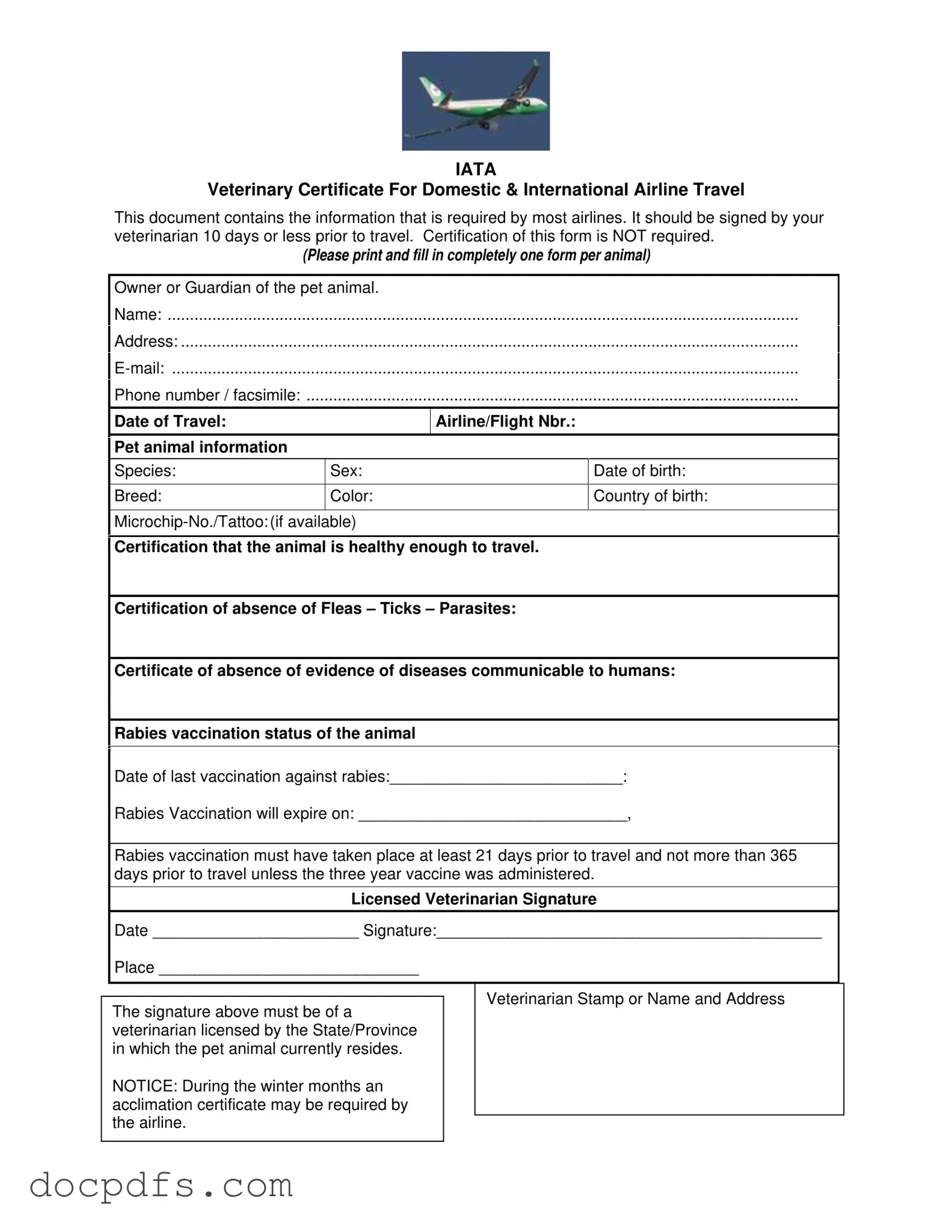Traveling with pets requires careful planning, and the Veterinary Certificate Travel form plays a crucial role in ensuring a smooth journey for both animals and their owners. This document is essential for both domestic and international airline travel, as it contains vital information that airlines typically require. To comply with airline regulations, the form must be completed and signed by a licensed veterinarian within 10 days of travel. Each animal requires its own form, which includes sections for the owner's details, such as name, address, and contact information, along with specific information about the pet, including species, breed, and microchip number if available. Additionally, the form certifies that the animal is healthy enough to travel and free from fleas, ticks, and parasites. It also verifies the rabies vaccination status, noting the date of the last vaccination and its expiration. Importantly, the rabies vaccination must have been administered at least 21 days prior to travel, ensuring that pets meet the health requirements set by airlines. Furthermore, during winter months, an acclimation certificate may be necessary, adding another layer of consideration for pet owners. Understanding these requirements helps ensure that pets travel safely and legally.
